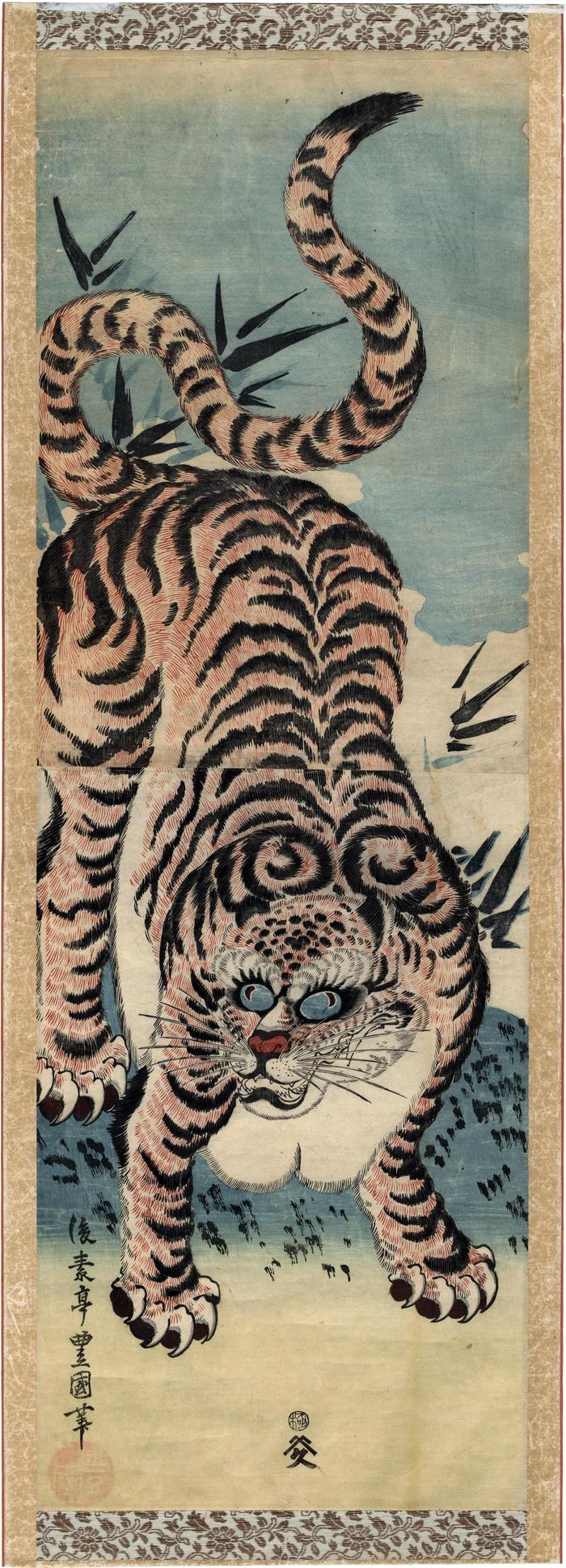Utagawa Toyokuni II (二代目歌川豊国) (artist 1777 – 1835)
Tiger and bamboo (take no tora 竹の虎)
ca 1826 – 1830
11 in x 30.6 in (Overall dimensions) Japanese color woodblock print
Signed: Gosotei Toyokuni hitsu
後素亭豊國筆
Artist's seal in red: Toyokuni (豊國)
Publisher : Yamamotoya Heikichi
(Marks 595 - seal 04-007)
Censer : kiwame
Smart Museum of Art, the University of Chicago In a December, 2022 Zacke catalog, 'Fine Japanese Art', it says: "Tiger imagery has a long history in East Asia.... Tigers are... commonly paired with bamboo, which is known as take no tora, or 'tiger in bamboo', and has many different interpretations; the tiger has a strong nature, is flexible and resilient like the bamboo, but it is also said the strong tiger is looking for shelter underneath the bamboo, as an earthly power is inferior to the forces of nature. Moreover, the tiger and bamboo represent the power of faith in Buddhism."
****
There is some gauffrage in the white fur seen below the tiger's head.
****
Illustrated in black and white in a catalog from 'Rare and valuable Japanese color prints...' from Anderson Galleries, New York, 1923, no. 465. On deposit in the Bibliothèque de l'Institut National d'Histoire de l'Art, collections Jacques Doucet.
Yamamotoya Heikichi (山本屋平吉) (publisher)
Kakemono-e - 掛物絵 (genre)
